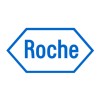Filter interviews by
Jodas Expoim Interview Questions and Answers
24 Interview questions
A resume highlights your skills, experience, and education relevant to the job you're applying for.
Contact Information: Include your name, phone number, and email address.
Objective Statement: A brief statement about your career goals and what you bring to the role.
Education: List your degrees, institutions, and graduation dates, e.g., 'B.Sc. in Biology, XYZ University, 2020'.
Work Experience: Detail your previous j...
IR spectroscopy is based on the principle of absorption of infrared radiation by molecules.
IR spectroscopy measures the vibrations of molecules in the infrared region of the electromagnetic spectrum.
Different functional groups absorb at different frequencies, allowing for identification of compounds.
IR spectra can be used to determine the presence of impurities or contaminants in a sample.
IR spectroscopy is widely...
Thermal conductivity detectors (TCD) and Flame ionization detectors (FID) are bulky in gas chromatography.
TCD and FID are commonly used detectors in gas chromatography
TCD measures thermal conductivity of the sample while FID measures ionization of the sample
Both detectors require bulky components such as a flame or a filament
Other detectors such as mass spectrometry (MS) or electron capture detector (ECD) are less...
UV-visible range is the range of electromagnetic radiation that is visible to the human eye.
The UV-visible range is typically between 200-800 nanometers.
UV radiation has a shorter wavelength and higher energy than visible light.
Examples of UV-visible range applications include spectroscopy and photolithography.
UV radiation can be harmful to human skin and eyes.
Visible light is the portion of the UV-visible range t...
UV spectroscopy is based on the principle that molecules absorb ultraviolet or visible light to excite their electrons to higher energy levels.
UV spectroscopy measures the absorption of light in the UV or visible region of the electromagnetic spectrum.
The amount of light absorbed is proportional to the concentration of the absorbing species.
UV spectroscopy is used to determine the concentration of a substance in a...
There are two types of ion chromatography: cation exchange chromatography and anion exchange chromatography.
Cation exchange chromatography separates positively charged ions based on their affinity for negatively charged resin.
Anion exchange chromatography separates negatively charged ions based on their affinity for positively charged resin.
Both types of ion chromatography use a mobile phase and a stationary phase...
Conductivity detector is commonly used in ion chromatography.
Conductivity detector measures the ability of ions to conduct electricity.
It is used in ion chromatography to detect and quantify ions in a sample.
It is particularly useful for analyzing inorganic ions such as anions and cations.
Examples of applications include water quality testing, food and beverage analysis, and pharmaceutical analysis.
Functional groups are specific atoms or groups of atoms within a molecule that determine its chemical properties.
Functional groups are responsible for the reactivity and solubility of a molecule.
Common functional groups include hydroxyl, carbonyl, carboxyl, amino, and phosphate groups.
Functional groups can be identified by their characteristic chemical reactions and spectral properties.
Functional groups play a cru...
Detectors used in gas chromatography include FID, TCD, ECD, NPD, and MS.
Flame Ionization Detector (FID) is used for organic compounds
Thermal Conductivity Detector (TCD) is used for inorganic compounds
Electron Capture Detector (ECD) is used for halogenated compounds
Nitrogen-Phosphorus Detector (NPD) is used for nitrogen and phosphorus-containing compounds
Mass Spectrometry (MS) is used for identifying unknown compou...
Oxidation is the loss of electrons, while reduction is the gain of electrons.
Oxidation involves the addition of oxygen or the removal of hydrogen from a molecule.
Reduction involves the addition of hydrogen or the removal of oxygen from a molecule.
Oxidation and reduction always occur together in a chemical reaction, known as a redox reaction.
Examples of redox reactions include combustion, rusting, and photosynthesi...
Jodas Expoim Interview Experiences
23 interviews found
I appeared for an interview before Mar 2024, where I was asked the following questions.
- Q1. Filter validation
- Q2. Sterile dosage form development
- Q3. Regulatory requirements for filling
- Q4. Details about sterilization
I applied via Naukri.com and was interviewed in Mar 2024. There were 2 interview rounds.
(1 Question)
- Q1. Questions regarding to commissioning, aseptic area and fundas and principle related related to daily work
(1 Question)
- Q1. About Company Career Goals Reason for Job change
I appeared for an interview before Jul 2024, where I was asked the following questions.
- Q1. Can you tell me something about yourself?
- Q2. What are your salary expectations?
- Ans.
I expect a competitive salary that reflects my experience and the industry standards for a Senior Research Associate.
Research industry standards: For example, similar roles in my region typically offer between $70,000 and $90,000 annually.
Consider my experience: With over 5 years in research, I bring valuable skills that enhance team productivity.
Discuss benefits: I'm also interested in the overall compensation package...
Interview Preparation Tips
I applied via Naukri.com and was interviewed in May 2023. There were 3 interview rounds.

(3 Questions)
- Q1. Self interdiction
- Q2. They always go through resume
- Q3. In resume what we fill just they asking about that
- Ans.
A resume highlights your skills, experience, and education relevant to the job you're applying for.
Contact Information: Include your name, phone number, and email address.
Objective Statement: A brief statement about your career goals and what you bring to the role.
Education: List your degrees, institutions, and graduation dates, e.g., 'B.Sc. in Biology, XYZ University, 2020'.
Work Experience: Detail your previous jobs, ...
(2 Questions)
- Q1. Why are choosing jodas
- Q2. Why you are leaving your present company
Interview Preparation Tips

(1 Question)
- Q1. Syllabus questions normal round
(1 Question)
- Q1. Very normal question about yourself
I appeared for an interview before Mar 2021, where I was asked the following questions.
- Q1. How to do the product development
- Q2. Challenges, troubleshooting faced
- Q3. How to do the chacterisation
- Q4. Sterility BET calculation
- Q5. Reason behind looking change
Interview Preparation Tips
I applied via Walk-in and was interviewed in Sep 2022. There were 5 interview rounds.

What is chemistry, organic, inorganic, analytical, physical?
How use the chemistry in pharma?
WhichInstrument use in pharmaceutical compny?
(19 Questions)
- Q1. What is use of HPLC? Advantageous and Application? What is chromatography? Type of chromatogeaphy and used?
- Ans.
HPLC is a technique used to separate, identify, and quantify components in a mixture. Chromatography is a method to separate components.
HPLC is advantageous as it can separate complex mixtures with high resolution and sensitivity.
It is used in pharmaceuticals, food and beverage, environmental analysis, and forensic science.
Chromatography is a technique used to separate components based on their physical and chemical pr...
- Q2. What is Define of PH? How many range of PH
- Ans.
pH is a measure of acidity or alkalinity of a solution. It ranges from 0 to 14.
pH stands for 'potential of hydrogen'
A pH of 7 is considered neutral, below 7 is acidic, and above 7 is alkaline
Each whole pH value below 7 is ten times more acidic than the next higher value
Each whole pH value above 7 is ten times more alkaline than the next lower value
- Q3. What is Gas chromatography? And state advantageos
- Ans.
Gas chromatography is a technique used to separate and analyze volatile compounds in a mixture.
It involves injecting a sample into a column filled with a stationary phase and a carrier gas.
The compounds in the sample interact differently with the stationary phase and are separated as they travel through the column.
The separated compounds are detected and identified based on their retention time and other properties.
Adv...
- Q4. What is Acid? What is base? Which range are Acid and base?
- Ans.
Acid is a substance that donates hydrogen ions, while base is a substance that accepts hydrogen ions. The pH scale ranges from 0-14.
Acids have a pH below 7, while bases have a pH above 7.
Acids taste sour and can corrode metals, while bases taste bitter and feel slippery.
Examples of acids include vinegar, lemon juice, and battery acid, while examples of bases include soap, bleach, and ammonia.
- Q5. Which type of detector are used in gas chromatography?
- Ans.
Detectors used in gas chromatography include FID, TCD, ECD, NPD, and MS.
Flame Ionization Detector (FID) is used for organic compounds
Thermal Conductivity Detector (TCD) is used for inorganic compounds
Electron Capture Detector (ECD) is used for halogenated compounds
Nitrogen-Phosphorus Detector (NPD) is used for nitrogen and phosphorus-containing compounds
Mass Spectrometry (MS) is used for identifying unknown compounds
- Q6. What is ion chromatography? And what is resin?
- Ans.
Ion chromatography is a technique used to separate and analyze ions in a sample. Resin is a solid material used in the process to exchange ions.
Ion chromatography separates ions based on their charge and affinity for the stationary phase
Resin is a solid material with charged functional groups that exchange ions with the sample
Examples of applications include analyzing water quality, food and beverage testing, and pharm...
- Q7. What is principle of HPLC? How to work in that instrument?
- Ans.
HPLC is a chromatographic technique used to separate, identify, and quantify components in a mixture.
HPLC works by pumping a liquid sample mixture through a column packed with stationary phase material.
The components in the mixture interact differently with the stationary phase, causing them to separate and elute at different times.
The eluted components are detected by a detector and recorded as a chromatogram.
HPLC is ...
- Q8. Which detector are used in HPLC?
- Q9. Which detector are bulkey in gas chromatography?
- Q10. Which type of ion chromatography?
- Ans.
There are two types of ion chromatography: cation exchange chromatography and anion exchange chromatography.
Cation exchange chromatography separates positively charged ions based on their affinity for negatively charged resin.
Anion exchange chromatography separates negatively charged ions based on their affinity for positively charged resin.
Both types of ion chromatography use a mobile phase and a stationary phase to s...
- Q11. Which detector are also used in HPLC?
- Q12. Conductivity detector common used in which chromatography
- Ans.
Conductivity detector is commonly used in ion chromatography.
Conductivity detector measures the ability of ions to conduct electricity.
It is used in ion chromatography to detect and quantify ions in a sample.
It is particularly useful for analyzing inorganic ions such as anions and cations.
Examples of applications include water quality testing, food and beverage analysis, and pharmaceutical analysis.
- Q13. What is Normality? And what is molality?
- Ans.
Normality is the concentration of a solution expressed as the number of equivalents of solute per liter of solution. Molality is the concentration of a solution expressed as the number of moles of solute per kilogram of solvent.
Normality is a measure of the number of reactive species in a solution.
It is expressed in terms of equivalents per liter of solution.
Molality is a measure of the concentration of a solution in t...
- Q14. Which are functional group?
- Ans.
Functional groups are specific atoms or groups of atoms within a molecule that determine its chemical properties.
Functional groups are responsible for the reactivity and solubility of a molecule.
Common functional groups include hydroxyl, carbonyl, carboxyl, amino, and phosphate groups.
Functional groups can be identified by their characteristic chemical reactions and spectral properties.
Functional groups play a crucial ...
- Q15. Which is principle of uv spectroscopy?
- Q16. Which is principle of IR spectroscoy?
- Q17. What is range of uv-visible range?
- Q18. What is oxidation and reduction?
- Q19. What is normal range of PH?
Interview Preparation Tips
Formulation and Development Research Associate Interview Questions & Answers
posted on 29 Sep 2022
I applied via Recruitment Consulltant and was interviewed in Aug 2022. There were 3 interview rounds.

(1 Question)
- Q1. Reason for change with experience details
(1 Question)
- Q1. Formulation development experience
Interview Preparation Tips
I applied via Referral and was interviewed before Oct 2022. There were 3 interview rounds.

(1 Question)
- Q1. Introduce yourself
(1 Question)
- Q1. Basically what you know about monoclonal antibody
I applied via Naukri.com and was interviewed in May 2022. There were 3 interview rounds.

(3 Questions)
- Q1. Why you want change company
- Q2. What is the exposure area
- Ans.
Exposure area refers to the extent of an individual's experience or knowledge in a particular field or industry.
Exposure area can be determined by analyzing an individual's education, work experience, and training.
It is important for individuals to have a strong exposure area in order to excel in their chosen field.
For example, a software engineer's exposure area may include programming languages, software development ...
- Q3. What is your strength in work area
(2 Questions)
- Q1. What is your current salary
- Q2. What is expected salary
- Ans.
I expect a competitive salary that reflects my experience, skills, and the value I bring to the organization.
Research industry standards for similar roles to set a baseline.
Consider my years of experience and specialized skills that enhance my value.
Factor in the company's size and location, as these can influence salary ranges.
Be open to discussing a range rather than a fixed number to allow for negotiation.
Example: F...
Interview Preparation Tips
I applied via LinkedIn and was interviewed before Aug 2022. There were 4 interview rounds.

(1 Question)
- Q1. Based on experience
(1 Question)
- Q1. Personal & professional skills
External qualification
Interview Preparation Tips
Top trending discussions






Jodas Expoim Interview FAQs
The duration of Jodas Expoim interview process can vary, but typically it takes about less than 2 weeks to complete.
Tell us how to improve this page.
Jodas Expoim Interviews By Designations
- Jodas Expoim Junior Executive Interview Questions
- Jodas Expoim Research Scientist Interview Questions
- Jodas Expoim Senior Executive Interview Questions
- Jodas Expoim Research Associate 1 Interview Questions
- Jodas Expoim Research Associate Interview Questions
- Jodas Expoim Warehouse Manager Interview Questions
- Jodas Expoim Executive Assistant Interview Questions
- Jodas Expoim Assistant Manager Interview Questions
- Show more
Interview Questions for Popular Designations
Overall Interview Experience Rating
based on 11 interview experiences
Difficulty level
Duration
Interview Questions from Similar Companies
Jodas Expoim Reviews and Ratings
based on 278 reviews
Rating in categories
Hyderabad / Secunderabad
10-16 Yrs
₹ 13-22.5 LPA
|
Executive
153
salaries
| ₹3.2 L/yr - ₹7.2 L/yr |
|
Senior Executive
94
salaries
| ₹4.9 L/yr - ₹10.6 L/yr |
|
Research Associate
89
salaries
| ₹2.1 L/yr - ₹5.2 L/yr |
|
Assistant Manager
53
salaries
| ₹6.1 L/yr - ₹12 L/yr |
|
Junior Executive
49
salaries
| ₹2 L/yr - ₹4.6 L/yr |

Apotex Research

Synokem Pharmaceuticals
Rubicon Research

Roche Diagnostics
- Home >
- Interviews >
- Jodas Expoim Interview Questions














